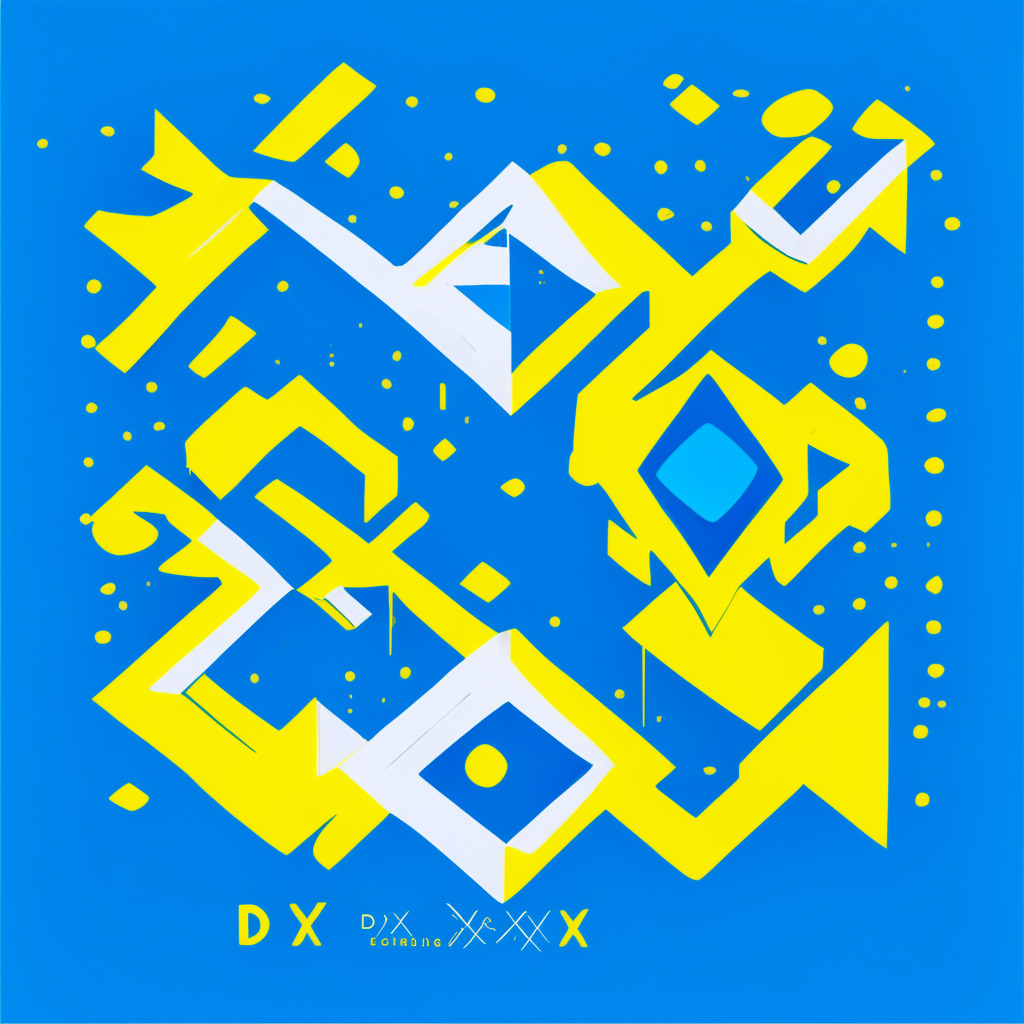Sui Network has integrated Google, Facebook, and Twitch logins into its DApps (decentralized applications), aiming to streamline the onboarding process on Web3 and eliminate the need for managing an external crypto wallet. The new zkLogin (Zero Knowledge login) feature ensures user privacy and security, essential characteristics in Blockchain applications.
Search Results for: Mina Foundation
Navigating Privacy: Google’s Privacy Sandbox and the Future of Online Advertising
Google Chrome has unveiled a new ad-curating platform, “Privacy Sandbox,” aimed at eliminating reliance on third-party cookies and fingerprinting. This move, regarded as a significant shift in internet advertising, has sparked mixed reactions over its effectiveness in enhancing user privacy. The balance between targeted advertising and privacy remains a contentious industry issue.
Ethereum Co-Founder’s Compromised Account: A Wake-Up Call on Crypto Security
The Ethereum co-founder’s social media account was hacked, with the hacker posting a fraudulent story and a malicious link that resulted in stolen funds totalling $691,000. This incident led to questions about cybersecurity preparedness in the crypto community, highlighting the significant ongoing threat from hacks and scams.
The Dilemma of Bitcoin ETFs: A Step Forward or Back for Crypto Adoption?
“The Securities and Exchange Commission’s (SEC) decision on approving a Bitcoin ETF continues to stir anticipation. An approval may validate crypto in the US and offer easy Bitcoin exposure to investors. However, it contradicts the crypto industry’s premise of independence from traditional finance, and carries counterparty risks and potential network hard fork issues. Retaining Bitcoin’s unique value and security is paramount.”
China’s Crypto Clampdown vs Global Leanings: Divergent Paths in Blockchain Evolution
China continues its crackdown on crypto activities on Weibo, targeting more than 80 influential crypto personalities. Meanwhile, the IMF and FSB released policy recommendations to manage cryptocurrency-associated financial risks. In other developments, the DFINITY Foundation partners with Lugano’s municipality and Unstoppable Domains added .eth domain support to its messaging service.
Revolutionizing Financial Markets with AI and Blockchain: A Double-Edged Sword?
“Blockchain and AI could revolutionize the financial markets, potentially lowering costs and modernizing payment systems. However, they demand upfront investment and may initially inflate IT expenses. Risks like tax evasion and money laundering must also be kept in check. Despite hurdles, the full potential of these technologies is still unfolding.”
dYdX’s Bold Leap: Migrating from Ethereum to Cosmos with Decentralized Order Books
“dYdX is introducing decentralized order books to their platform and is shifting from the Ethereum network to the Cosmos network. CEO Charles d’Haussy proposes an innovative blend of decentralization and speed, hosting order books within the validators. This ambitious transition seeks to achieve a ‘purely decentralized’ order book exchange while ensuring high-speed crypto derivative responses.”
Decentralized Exchange dydx’s Token Migration to Layer 1: A Unanimous Move or Market Hype?
“Decentralized exchange dydx gains almost universal user approval to migrate to its latest version, adopting DYDX as its Layer 1 token for its imminent blockchain. The community’s vote facilitates the token’s transition from Ethereum to a Layer 1 appchain within the Cosmos ecosystem.”
Stellar Lumens’ Impressive Comeback vs Launchpad XYZ’s Potential: Breaking Down the Future of Crypto
Stellar Lumens has experienced a 12% comeback ahead of the Stellar Development Foundation’s announcement. As a key player in stablecoin blockchains, its recovery rally signifies a 16% increase from its double-bottomed support. Its underlying strength suggests a potential 32.68% increase, painting a bullish picture for both new and experienced investors.
Ethereum’s Tug of War: Struggling Between Node Centralization and Ultimate Scalability
Ethereum is battling with the issue of node centralization, with much of its network activity verification reliant on centralized services like AWS. Ethereum’s co-founder, Vitalik Buterin, has indicated that true decentralization, achievable through “statelessness” and operability on affordable hardware, is a key part of Ethereum’s long-term roadmap, despite the technical challenges anticipated.
Landmark Court Ruling: The HelbizCoin Class Action Suit and an Awaited Legal Framework for Crypto
The United States District Court has allowed a class action suit against the creators of HelbizCoin, marking a significant step towards effective regulation in the crypto world. Accused of a deceptive pump-and-dump scheme by around 20,000 investors, Helbiz has wound up in court where accusations of fraud, price manipulation, and violations of securities and commodities laws have been upheld.
Bitcoin Stumbles as Wall Street Memes Rise: Navigating the Crypto Rollercoaster
Bitcoin’s price fell over 5.5% following SEC’s delay on Bitcoin ETF application approvals. High volatility continues with emerging meme coins such as Shiba V Pepe (SHEPE) and Wall Street Memes (WSM). These developments evidence the evolving and high-risk nature of cryptocurrency investments.
Bitcoin ETFs: A Tug of War between Market Fluctuations, Regulatory Battles and Future Stability
Despite an 11% drop in August Bitcoin’s price, the market remained relatively stable due to the possibilities of a Bitcoin ETF. This was spurred by Grayscale’s legal victory against SEC’s planned obstruction of its Bitcoin Trust conversion to an ETF. However, SEC’s delay in approving other ETF applications signals authorities’ hesitancy to fully embrace cryptocurrencies. Regardless of regulatory uncertainties and market oscillations, optimism for cryptocurrency technology’s future remains.
Web 3 Dilemma: $1.2 Billion Lost to Hacks and Fraud Amid the Blockchain Revolution
“The digital ecosystem of Web 3 platforms has reported a loss of over $1.2 billion this year due to hacks and rug pulls, states web3 bug bounty establishment, Immunefi. With heavy losses in August 2021, Ethereum witnessed the most manifold of attacks. Hacks clearly outweighed frauds as the root cause of these financial missteps. These financial drains highlight the need for thorough scrutiny of blockchain technology’s defense mechanisms.”
SUI Network’s Rally Fades: Is it All Downhill or Reprieve in Sight? Plus, Rise of Sonik Coin
“Sui Network’s recovery wanes despite an initial 40% rally. Although struggling with variable market conditions, its layer-1 technology for faster smart contracts sees growth, with active accounts nearly doubling in a week. However, technical structures suggest possible future downturns. Meanwhile, Sonik Coin is gaining momentum, with a promising staking APY and a community-focused vision, distinguishing it in the meme coin market.”
EOS Network’s Dramatic Turnaround: Nod from JVCEA & Promises of the Japanese Market
EOS Network, a blockchain that garnered $4 billion in its initial coin offering, has been granted white-list approval by Japan’s regulatory body for crypto exchanges. This allows EOS to compete with major cryptocurrencies like Bitcoin and Ethereum on Japan’s regulated crypto exchanges. The approval signifies EOS’s compliance commitment and opens new opportunities for the network in the Japanese market.
Dancing on Shifting Sands: Crypto Companies Adapt Amid Regulatory Obstacles and Market Developments
“The crypto industry is witnessing significant developments like Coinbase and Circle’s consortium dissolution, Binance.US’s collaboration with MoonPay, and customer withdrawal issues on the main Binance platform. These changes highlight the dynamic adaptations adaptive to changing regulations, representing both intriguing possibilities and cautionary tales for the industry.”
Mastercard Ends Crypto Card Partnership with Binance: An Insight into Evolving Crypto Regulations
Mastercard has announced the termination of its cryptocurrency card partnership with Binance amid increased regulatory scrutiny of the cryptocurrency exchange. This decision, however, does not affect Mastercard’s other crypto card partnerships and highlights the evolving landscape of crypto regulations.
Navigating the Tokenization Wave: Growing Value and Unique Challenges in Blockchain-based Assets
Tokenization uses blockchain to monetize tangible and intangible assets, making them tradable and transparent. Despite cryptos’ ridicule for lack of tangible value, blockchain’s potential to transform assets is increasing. There’s even exploration of derivative, swap, and fixed income security systems. Companies like Pendle Finance and Dinari are demonstrating this potential, while concerns rise about tokenizing user engagement. Elsewhere, Central African Republic is aiming to tokenize its fiat money, a move that could inspire other countries.
Advocacy Group Coin Center Pushes for More Refined Crypto Tax Policies
Crypto policy experts at Coin Center are advocating for a better tax policy for digital assets. They propose a nominal exemption for small crypto transactions, no tax on block rewards until sold, and simpler methods for determining cryptocurrency donation amounts. They also emphasize the need for tax policy clarity for third-party non-custodial intermediaries in digital asset transactions.
Shady Operations at Moonstone: Unfurling the Ties between Traditional Banks and Crypto Exchanges
“Moonstone Bank’s notorious shift to a pro-digital-asset stance has led to clandestine operations linked with the now-defunct crypto exchange FTX. The bank allegedly engaged in issuing stablecoins, raising concerns over regulatory oversight and reinforcing the need for stringent digital asset regulation in the finance sector.”
Unraveling the Energy Conundrum: Blockchain’s Role in Driving a Sustainable Future
“Binance recently addressed Bitcoin’s high energy consumption concerns, emphasizing the shift in contemporary blockchains towards more energy-efficient mechanisms like proof of stake (PoS). This transition has significantly reduced power consumption and carbon footprint, providing a boost to green energy initiatives and promoting transparency in tracking carbon emissions across supply chains.”
ZTX’s Impressive $13 Million Seed Round: A Positive Sign for Web3 Metaverse’s Future or a Risky Leap?
Web3 metaverse platform, ZTX, recently secured a $13 million seed funding led by influential crypto firm, Jump Crypto. ZTX, backed by industry vets from firms like Apple and Roblox, and successful web3 ecosystems like Cosmos and Solana, plans to provide creators an infrastructure layer. Its legacy business, ZEPETO, has achieved success in the Web2 metaverse space. ZTX aims to take a defining role in the future of Web3.
Navigating the Future: Bank of Canada’s Perspective on Central Bank Digital Currencies
The Bank of Canada’s recent report examines the potential adoption of Central Bank Digital Currencies (CBDCs), noting that Canadians currently see no compelling reason to switch from traditional forms of payment. The report suggests that the elimination of physical cash could result in the majority relying more heavily on electronic payments and might significantly impact those dependent primarily on cash transactions. Despite potential interest, the bank warns of considerable barriers to universal CBDC acceptance. The bank proposes enhancing internet access, providing low-cost banking options, and fostering collaboration with retail and financial sectors to facilitate digital payment integration, while maintaining efficiency and confidence in the cash system.
Chimpzee Crypto: Swinging Towards Green Investments and Wildlife Conservation
Chimpzee, a crypto platform focusing on green investments, blends earning potential with an eco-conscious mission. The project, which recently raised over $1.15m through pre-sale of its $CHMPZ token, channels a portion of its profits to wildlife conservation efforts and other charities. The scheme also incentivizes participation and investment through token airdrops and other benefits.
Balancing Act: Unpacking the Prospects and Challenges in the Adoption of Blockchain Technology
“Blockchain technology guarantees transparency and decentralization, with substantial benefits in security and transparency. On reverse side, it also faces hurdles like market speculation, financial unpredictability impacted by cryptocurrencies prices fluctuation; and problems raised by blockchain’s immutable nature which makes correcting erroneous transactions almost impossible.”
Exploring Bitrefill-eSIM Go Collaboration: Crypto Payments for Global Connectivity
In collaboration with eSIM Go, Bitrefill allows crypto enthusiasts to buy eSIMs with digital coins in 140 countries, making travel easier for digital nomads. Overcoming challenges such as Bitcoin adoption in certain countries, this initiative could boost global crypto acceptance.
Regulation and Blockchain: Stifling Growth or Encouraging Investment?
The New York Attorney General is investigating financial transactions involving Digital Currency Group (DCG) and Genesis Global Capital, raising questions about the impact of regulations on the blockchain industry. While some fear regulations could damage the decentralizing nature of blockchain technologies, others suggest it could offer comfort and boost confidence amongst investors by ensuring transparency, accountability, and fair practices.
Anticipating the Next Bull Run: Evaluating BTC’s Market Stance Amidst Dipping Prices
Despite Bitcoin’s current tight trading range, some bullish industry traders believe that conditions have reset for a potential surge. Using Bitcoin’s market cap dominance and its relative strength index (RSI) as evidence, they claim that significant upside moves are still ahead. However, this optimistic prediction does not erase the potential risks of the volatile crypto-market, emphasizing the importance of self-conducted research.
Ripple vs SEC: The Unfolding Drama and Its Implications on Crypto Regulation
“The Ripple case underlines the complexity of cryptocurrency regulations and the uncertainties prevalent due to its rapidly evolving landscape. This regulatory maze demands transparent regulations, fair oversight, and a consensus. The industry craves clear guidelines; until then, instances like Ripple’s will continue illuminating the nuances of cryptocurrency regulations, fostering legislative paths.”
Sam Bankman-Fried’s Legal Tug-of-War: Increasing Regulatory Pressures on Crypto Industry
“Sam Bankman-Fried, founder of crypto trading platform FTX, is embroiled in legal battles, with accusations weakened by a “thin” factual foundation. Bankman-Fried faces seven charges, including securities and wire fraud. The trials shed light on the regulatory pressures impacting the crypto industry.”
Crypto Market Stability vs Lending Protocol Risk: A Tale of Two Worlds Unraveling in Summer Heat
“Major cryptocurrencies Bitcoin and Ether appear stable despite market turmoil. Contrarily, a significant blow threatens lending protocols, especially the CRV token linked to Curve Finance’s DAO. The founder’s position drifts towards liquidation, leading to possible cascades of liquidations and a flood of assets into the market.”































